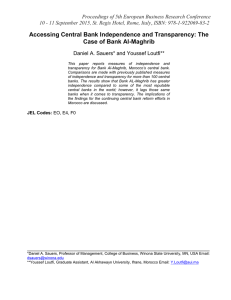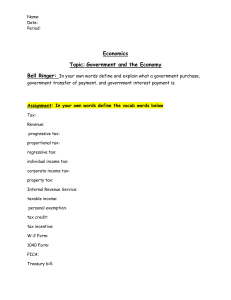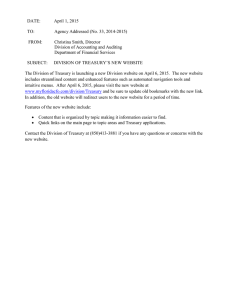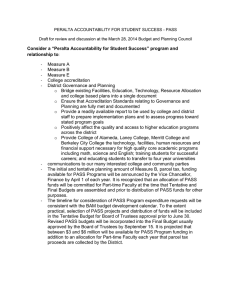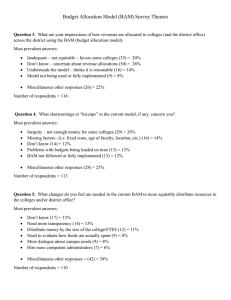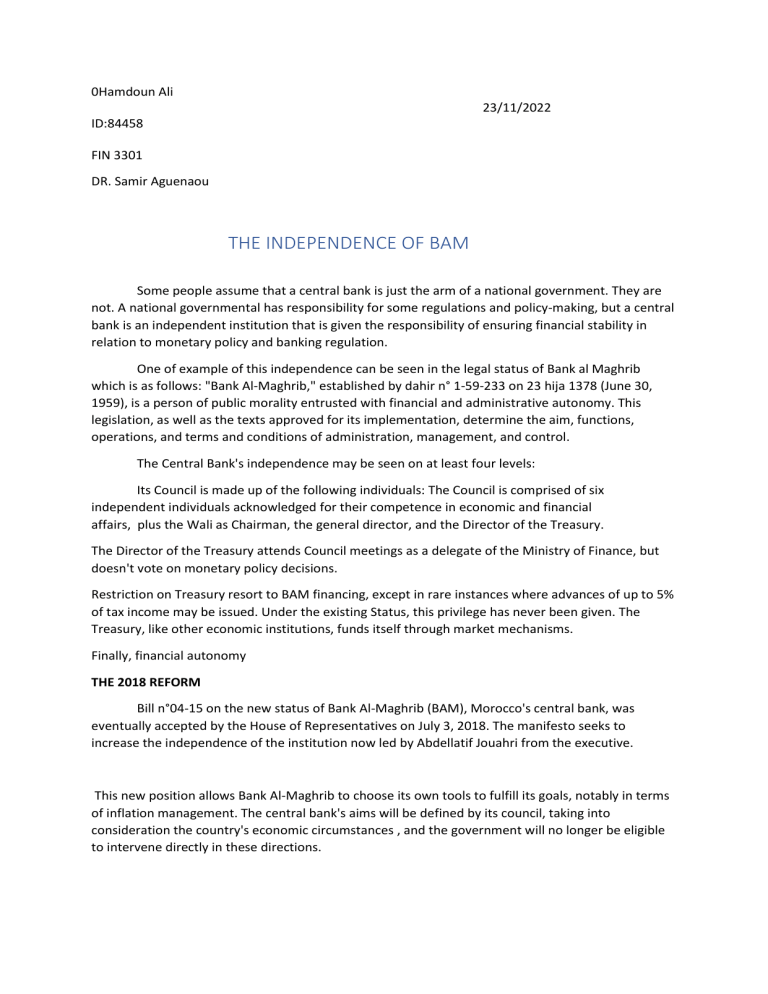
0Hamdoun Ali 23/11/2022 ID:84458 FIN 3301 DR. Samir Aguenaou THE INDEPENDENCE OF BAM Some people assume that a central bank is just the arm of a national government. They are not. A national governmental has responsibility for some regulations and policy-making, but a central bank is an independent institution that is given the responsibility of ensuring financial stability in relation to monetary policy and banking regulation. One of example of this independence can be seen in the legal status of Bank al Maghrib which is as follows: "Bank Al-Maghrib," established by dahir n° 1-59-233 on 23 hija 1378 (June 30, 1959), is a person of public morality entrusted with financial and administrative autonomy. This legislation, as well as the texts approved for its implementation, determine the aim, functions, operations, and terms and conditions of administration, management, and control. The Central Bank's independence may be seen on at least four levels: Its Council is made up of the following individuals: The Council is comprised of six independent individuals acknowledged for their competence in economic and financial affairs, plus the Wali as Chairman, the general director, and the Director of the Treasury. The Director of the Treasury attends Council meetings as a delegate of the Ministry of Finance, but doesn't vote on monetary policy decisions. Restriction on Treasury resort to BAM financing, except in rare instances where advances of up to 5% of tax income may be issued. Under the existing Status, this privilege has never been given. The Treasury, like other economic institutions, funds itself through market mechanisms. Finally, financial autonomy THE 2018 REFORM Bill n°04-15 on the new status of Bank Al-Maghrib (BAM), Morocco's central bank, was eventually accepted by the House of Representatives on July 3, 2018. The manifesto seeks to increase the independence of the institution now led by Abdellatif Jouahri from the executive. This new position allows Bank Al-Maghrib to choose its own tools to fulfill its goals, notably in terms of inflation management. The central bank's aims will be defined by its council, taking into consideration the country's economic circumstances , and the government will no longer be eligible to intervene directly in these directions. Although this reform is highly beneficial to the central bank’s independence , it doesn’t allow for total autonomy. Article 45 of the bill has been somewhat changed to counteract this additional authority. While it simply allowed for a basic hearing of the Governor of Bank Al-Maghrib by the Parliament's financial committees, the majority of deputies were able to impose a somewhat restricted amendment. These laws compel the governor of the BAM to appear before the finance commission after presenting the institution's annual report to the king. In addition, he may be summoned at any moment to answer questions about his assignments or to discuss a current issue. This demonstrates that in paper the Moroccan central bank is in fact independent from the government and any other entity. However, this independence may be challenged in various aspects. The first one residing the structure of the central bank. Except for monetary policy operations, the Government Commissioner controls the activities of the Bank on behalf of the State and in the name of the Minister responsible for finance, and ensures compliance by the latter with the legislative provisions governing said activities, particularly the provisions of the law on the Statute of Bank AlMaghrib. Other than that, there has been many instances where the government and the Moroccan central bank overlapped each other. In which case there was a divergence between the fiscal and monetary policy. The previous Wali of Bank-al-Maghrib Ahmed Alami Lahlimi had explicitly stated that the central bank acts following governments policies.
